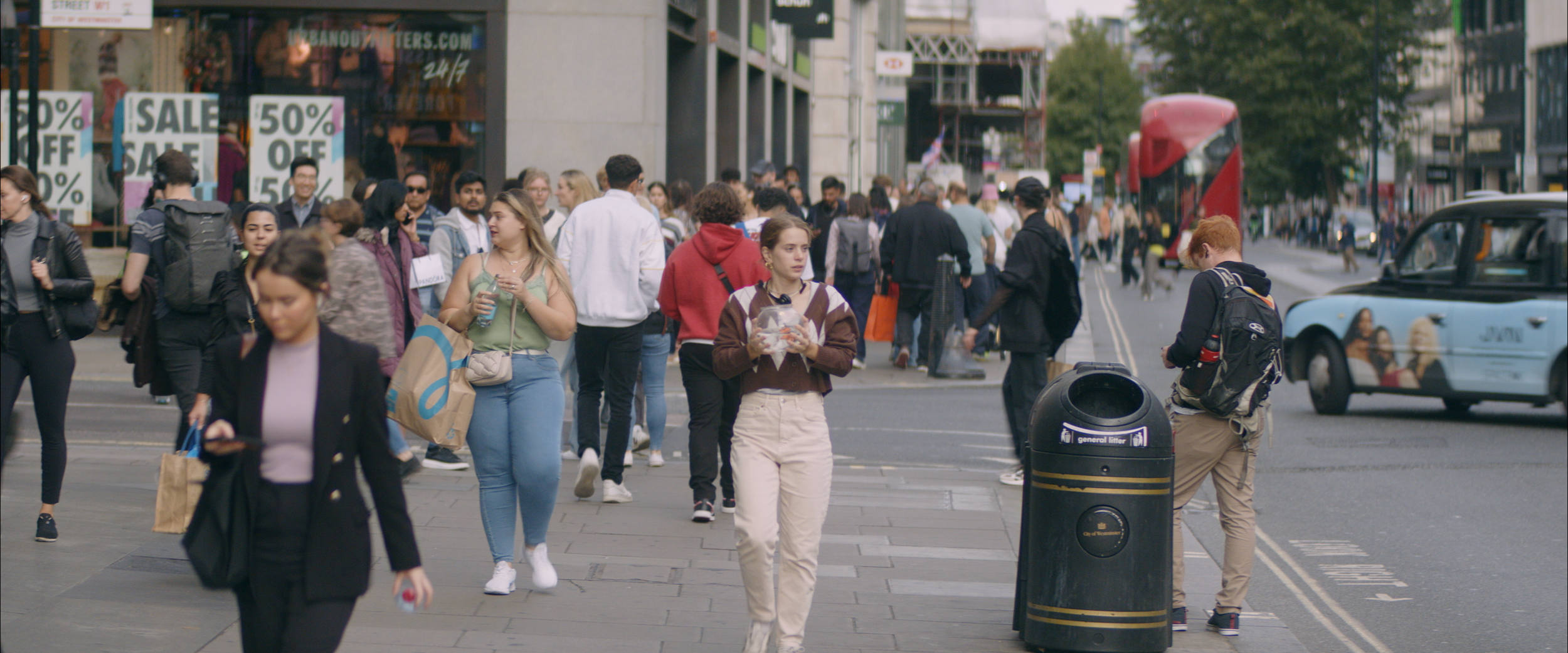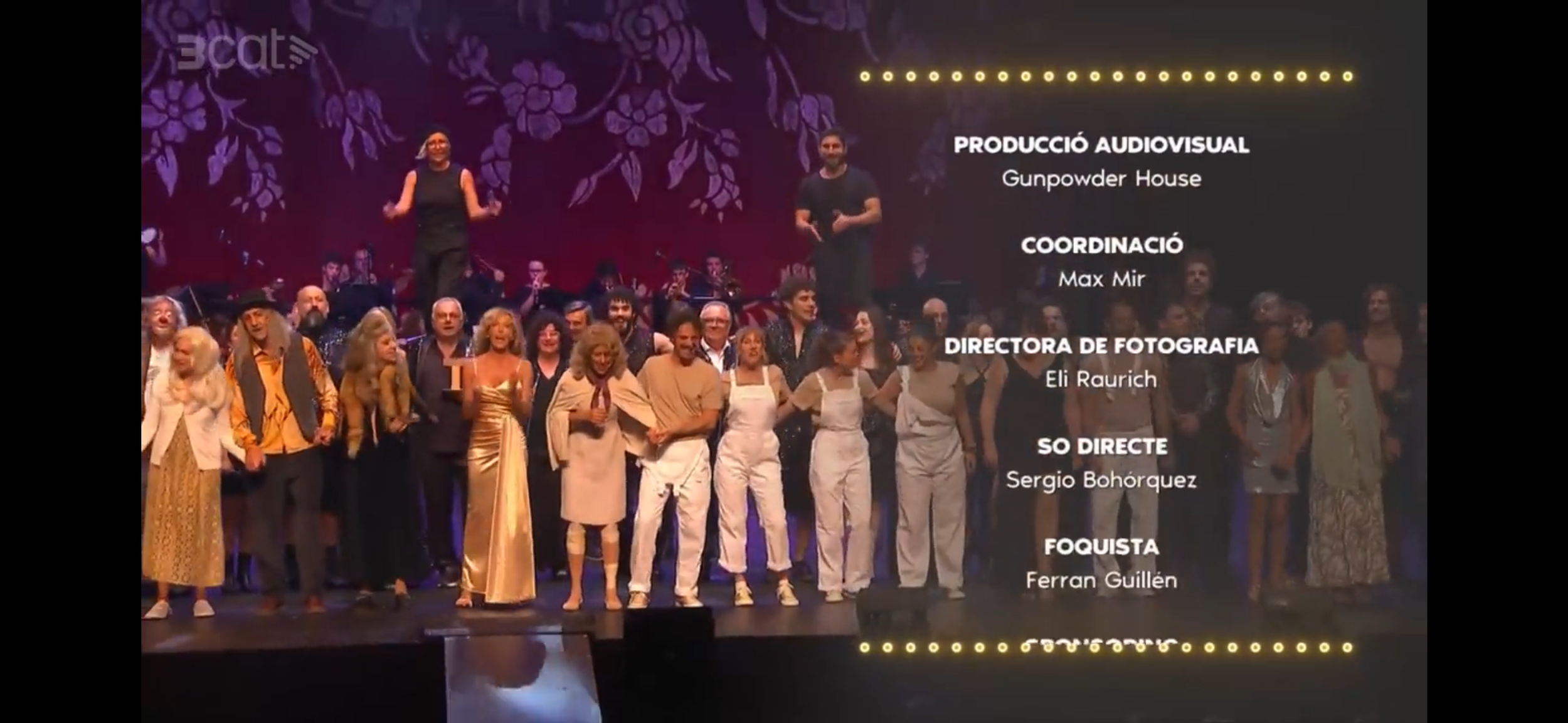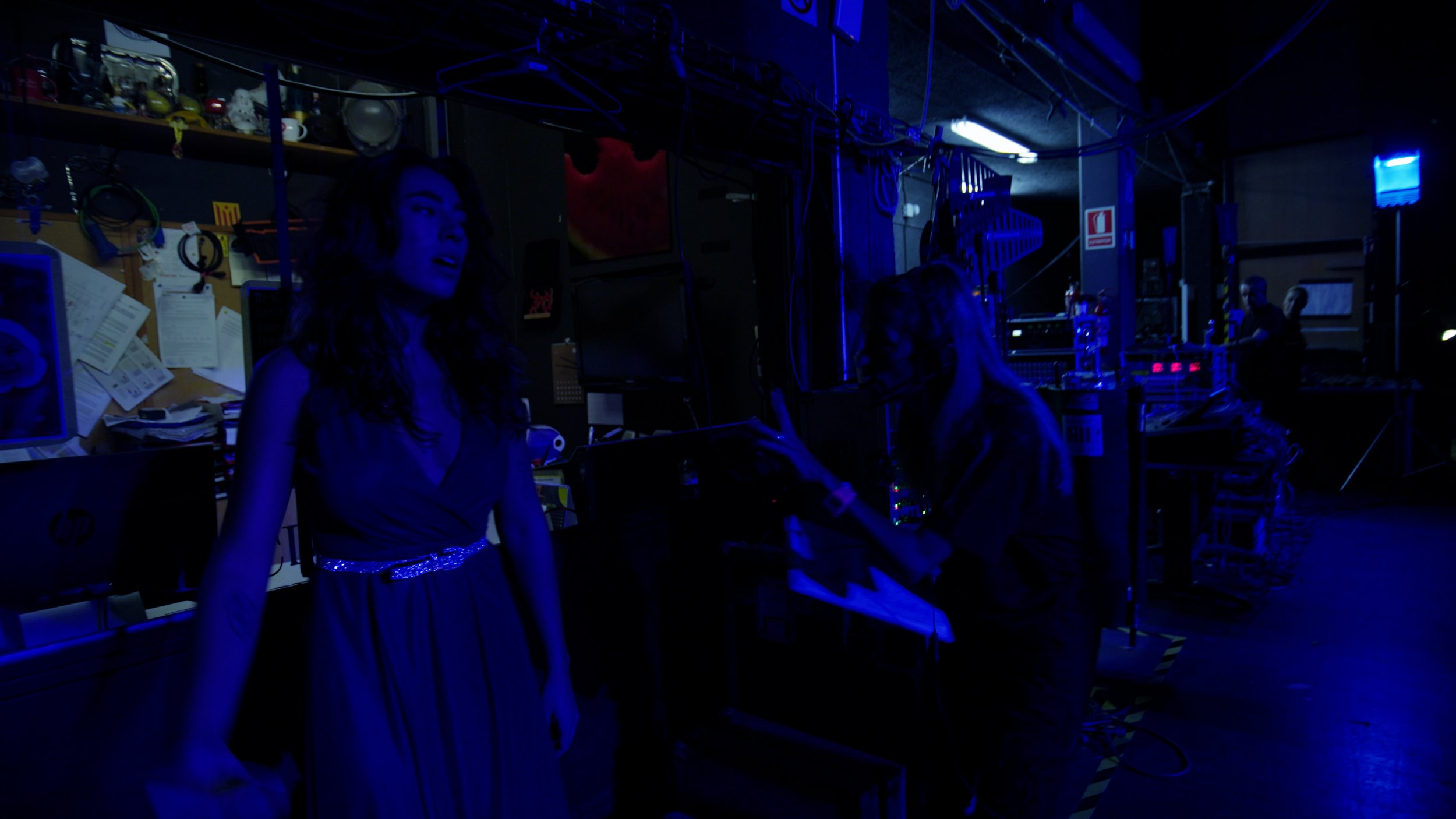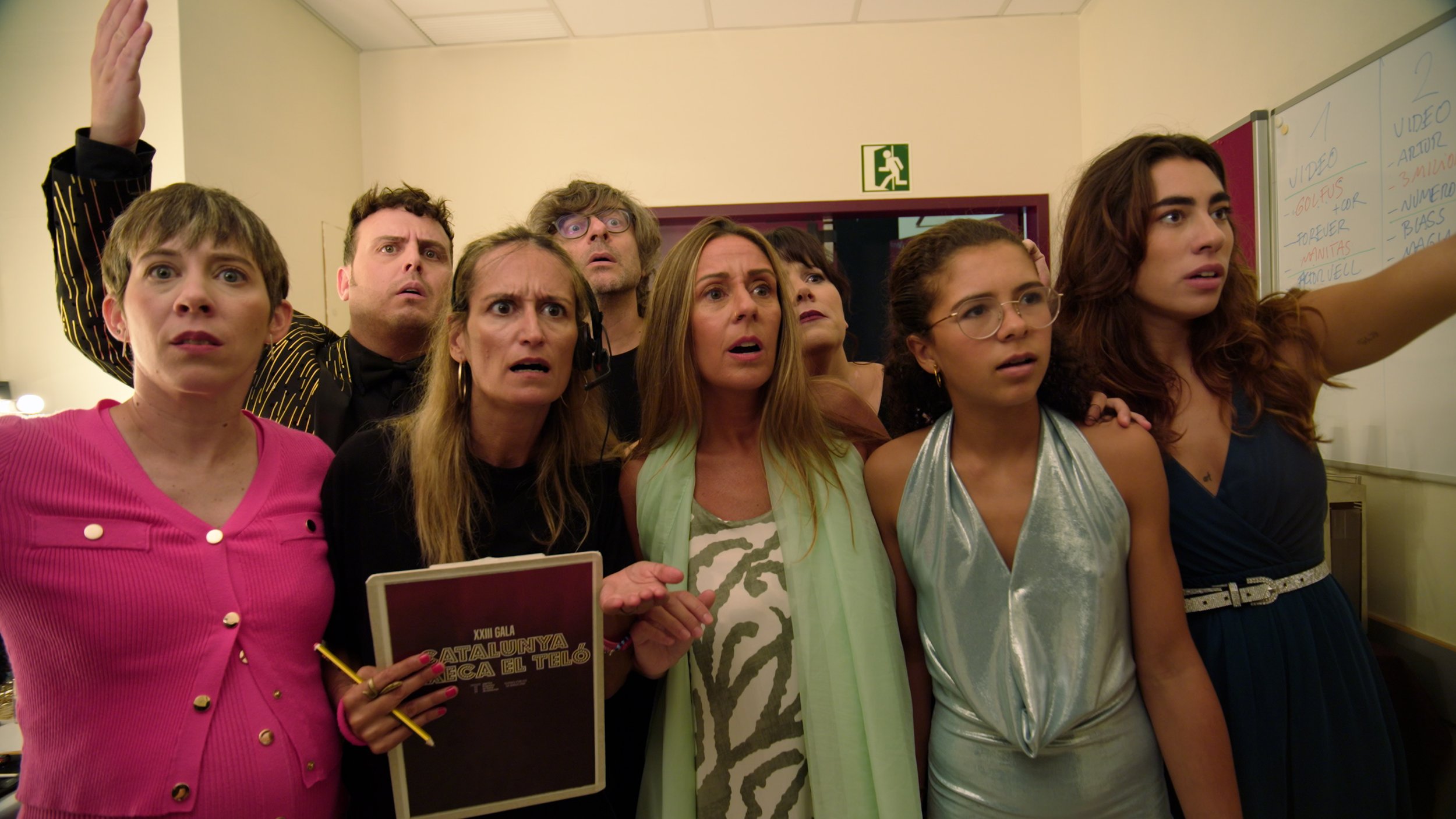CASE STUDY:
‘GALA ADETCA’
CATALUNYA AIXECA EL TELÓ
EXECUTIVE SUMMARY
In a vibrant collaboration with Adetca, Gunpowder House produced four videos to be screened at the prestigious 23rd Catalunya Aixeca el Teló gala. Our team worked closely with the client, crafting continuously-shot videos designed to be interpreted as a live broadcast depicting the chaos ensuing backstage as the gala goes on. Through fast-paced, dynamic storytelling we captured the excitement and elegance of the gala, ensuring that each video reflected the frenetic energy of a big event.
As this year’s gala slogan was “theatre has no age”, the gala’s creative team wanted to highlight the comedy that can arise from the young presenter’s egos competing with those who are more veteran. The seamless integration of our bold production style with their artistic goals resulted in an engaging visual experience that celebrated the cultural richness of Catalunya.
CLIENT BACKGROUND
THE ASSOCIATION OF THEATER COMPANIES OF CATALONIA (ADETCA) was born in 1992 with the aim of ensuring the development of private theater in any of its manifestations; since then it has been working on its promotion and socio-cultural dissemination and is committed to offering society a plural, free and independent theatrical option.
In these 30 years of history, it has given cohesion and visibility to the sector, making sure to achieve all possible improvements at a legal and economic level. Additionally, it has become a point of reference and the main liasion before institutions, organizations and other professional sectors.
OBJECTIVES
GOALS: To make FOUR continuously-shot videos that the audience will interpret as “live broadcast”. The videos must expose the drama that occurs backstage between the cast and crew of the gala.
CHALLENGES: Making four different one-take sequences, coordinating all the cast and crew’s movement, especially the camera operator’s. Creating light setups that will cover most of the action while not casting the camera’s shadow. Ensuring that all the dialogue and various actions are covered by the sound mixer.
APPROACH
We collaborated with the Gala’s production and creative team 7 months ahead of the event. We discussed and analysed the goals and challenges of the shoot, and laid out follow-up meetings over the coming months to keep us on track. We used an entire day to rehearse the motion of the camera and the mise-en-scène of the talent in order to save time and money. Previously, we had gone over the shot ideas with the director in order to have an understanding of the vision he had in his head.
PRODUCTION PROCESS
Pre-Production: Concept development, location research and analysis, travel management, script re-structuring. Full-fledged rehearsal of the four different videos, coordinating talent and camera movements.
Production: Filming across one tightly-scheduled day.
Post-Production: Sound editing/mixing and color grading of four deliverables. Coordinating with the MediaPro broadcasting unit to ensure files can be streamed live.
SOLUTIONS PROVIDED
The advantage of “oners” is they make the editing process much smoother and simplified than a regular edit with multiple shots and angles. On the other hand, sound editing and mixing is still quite a challenge. The crew is constantly making noise by moving around the space in order to make the shot work and have the talent move freely. The radio mics usually pick up the cast’s lines, but sometimes the sound can be rough if there is a lot of moving around. For example, Carme Conesa takes off her entire outfit during one of the videos, rendering the radio mic useless.
Another obstacle is crew shadows. In a space as illuminated as a theatre, there are bound to be multiple spots where the crew’s shadow accidentally shows up.
A final and unforeseen challenge we encountered was MediaPro’s broadcasting unit not being able to play the files. We had previously tested our file types and codecs successfully, so we were very confused by that!
CHALLENGES
Throughout the editing process, there was a lot of juggling between radio mics and the boom mic in order to obtain the best sound quality possible. As our videos were meant to mimic a real live broadcast, there was a lot of creative decision-making regarding sound. The assumption generally is that the best sound always comes from the radio mics, since they’re closest to the talent’s mouth. However, in this particular case, hearing the cast from far away, occasionally contributed to the realism of the video."
In order to get rid of shadows, a couple of floor runners were placed strategically around the set with flags to cover the lights that would cast shadows. The issue was they couldn’t cover the lights all the time, as then the videos would be dark. The covering of lights had to be timed very precisely and took several attempts to get right, but we got there in the end.
By collaborating closely with the MediaPro team, we fed the broadcasting unit a 1920x1080 resolution file, instead of a 4k one, and we solved the issue immediately. Seemingly, this particular unit wouldn’t accept high resolution files. However, as our kit is in line with industry standards, a 1920x1080 resolution file is still great, high quality.







































